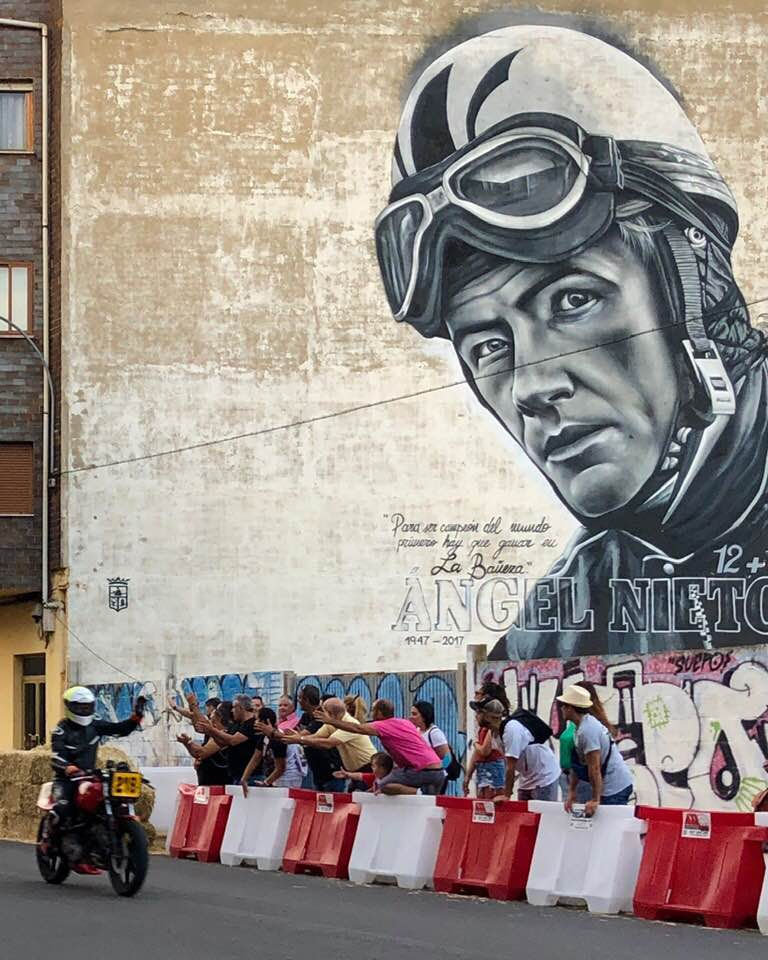RINGHINI 50. A tiny dinosaur
- Fernando Pedrinho
- Dec 8, 2022
- 3 min read
Text: Fernando Pedrinho (www.motox.pt)
Photos: BONHAMS

As with the dinosaurs, the tiny 50cc Grand Prix racers have long since become extinct. Therefore, it will be more and more difficult to see them evolve on a track. And this RINGHINI 50 even less! Weighing less than supermarket groceries, humming at frequencies almost only dogs could hear, these little bullets happily topped 160 km/h. They were born as the fruit of great ingenuity and enormous passion.
Franco Ringhini is a good example of this. Firstly, Franco Ringhini came to prominence when he joined the competition effort of another transalpine motorcycling visionary, Giancarlo Morbidelli. However, he started his activity as an engine designer at GUAZZONI. Brand that in the 1960s and 1970s focused on the low-capacity segments, with the best-known models being Cadetti and Matta. But Ringhini already left his signature on these 2-stroke engines by turning them 180 degrees.
The intake was thus at the front and the exhaust at the back, with the latter being equipped with a rotary valve in the respective window.

The MORBIDELLI adventure
In 1968, Franco began his adventure at MORBIDELLI, maintaining the same design in the engines designed for the 1969 World Championship adventure, which he used on his motorcycle and that of his teammate, Eugenio Lazzarini. The MORBIDELLI 50 was the Pesaro team's first successful competition bike. And this despite Lazzarini finishing twenty-first, with a mere six points, and Ringhini five places behind and a handful of points. Ringhini remained in Giancarlo Morbidelli's team until 1973, when he gave up his place to Jorg Möller, to form his team.
In between, he also designed the 125cc engine that Gilberto Parlotti successfully used in the 1970 campaign, even winning the Czechoslovak GP.
RINGHINI 50
Franco Ringhini became an independent tuner, as was usual at the time, creating limited series of 50cc competition and even building engines for other manufacturers, as was the case with BIMOTA. In 1973, the FIM forced the GP50 'little bees' to use single-cylinder engines and a maximum of six gearbox ratios. Franco then designed an engine with dimensions of 40x36mm, which gave it a capacity of 49.7cc. And that it was capable of delivering 14 horses at a rate of 14,500 revolutions per minute. The rest is what you can see: forward inclined cylinder, tubular frame, telescopic fork, swingarm with a pair of vertical shock absorbers, drum brakes (180mm at the front and 130mm at the rear) and 18-inch wheels. diameter. All this in a package that weighed only 60 kg. It is worth seeing the 'homemade' film that auctioneer Bonhams prepared for the photo unit and which is in an impeccable state of preservation. This RINGHINI 50 was auctioned in August 2020 for just under £10,000. And for those who like the subject, reading the book written by Mick Walker, Italian Racing Motorcycles, is simply mandatory.
By the Iberian Peninsula
In the 1970s, Iberian protectionism prevented motorcycles of Japanese origin from racing in Spain, for example.
Not infrequently, some of the Spanish riders circumvented this ban with some imagination.
Franco Ringhini helped prepare small series of Yamaha TZ125 and TZ250 to which he changed various parts and components in order to reduce the content of Japanese origin, which he later sold to 'nuestros hermanos'.
It was no coincidence that its representative was a rider from the Spanish championship…
PUB











Comments